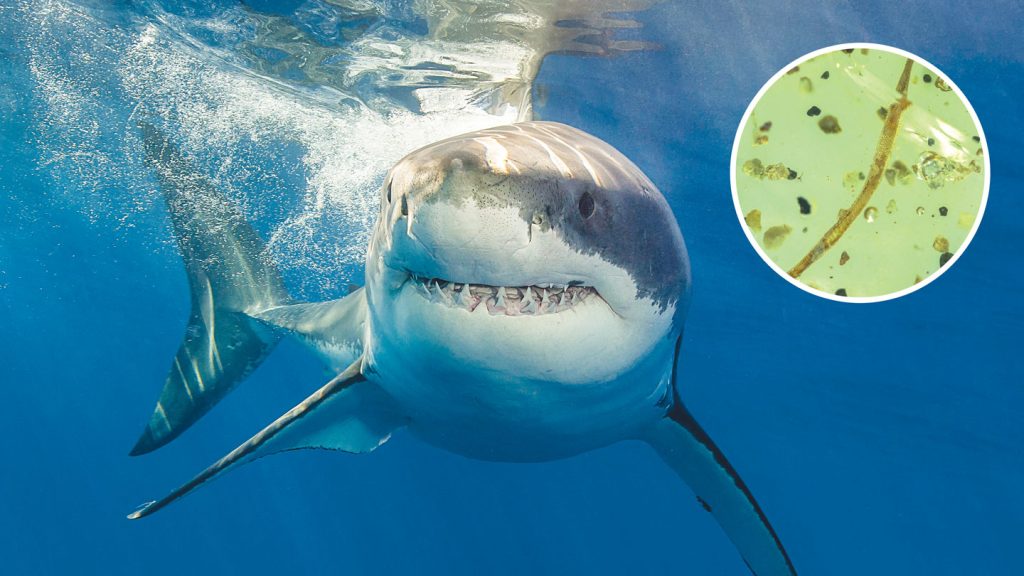A parasitic worm, dating back nearly 100 million years ago, was recently discovered preserved in amber in northern Myanmar. The worm closely resembles modern tapeworms found in shark intestines, with features such as armor, tentacles, and hooklets. This finding is exceptional because the fossilization of flatworms is rare due to their small, soft bodies and transient life cycles. The preservation of this flatworm in amber poses a puzzle for paleontologists to unravel, as it raises questions about how a marine parasite ended up in a tree.
The discovery of the 99-million-year-old flatworm in amber is a significant finding that sheds light on prehistoric parasitic relationships and preservation processes. The anatomy of the worm closely resembles modern flatworms found in shark intestines, indicating a potential parasitic relationship with ancient aquatic creatures. The researchers speculate that a scavenger or predator may have picked up the parasite from a beached shark carcass and deposited it in a nearby tree, leading to its eventual preservation in amber.
Further research and examination of complete specimens or host remains are needed to confirm the preservation scenario and unravel the mystery of how the flatworm ended up in amber. The discovery of this ancient parasite provides valuable insights into prehistoric ecosystems, parasite-host interactions, and the processes of fossilization and preservation. The rarity of finding body fossils of flatworms highlights the exceptional nature of this discovery and its potential to contribute to our understanding of ancient marine life.
Paleontologists and researchers are excited about the discovery of the 99-million-year-old flatworm, as it presents a unique opportunity to study ancient parasitic relationships and preservation processes. The fossilization of soft-bodied organisms like flatworms is exceedingly rare, making this finding particularly valuable for understanding prehistoric ecosystems. Further investigation into the origins and preservation of the flatworm in amber will provide valuable insights into the ancient marine environment and the interactions between parasites and their hosts.
The preservation of the flatworm in amber is likened to winning the lottery, as it offers a rare glimpse into ancient marine life and parasitic relationships. The discovery highlights the importance of scientific research and the value of studying fossils to understand the history of life on Earth. Through continued research and analysis of the fossilized flatworm, paleontologists hope to unravel the mysteries surrounding its preservation and shed light on the ancient ecosystems in which it once thrived.
In conclusion, the discovery of the 99-million-year-old flatworm preserved in amber is a remarkable finding that provides valuable insights into ancient parasitic relationships and preservation processes. This rare discovery offers a unique opportunity to study prehistoric marine life and sheds light on the interactions between parasites and their hosts. Further research and analysis of the fossilized flatworm will contribute to our understanding of ancient ecosystems and the processes of fossilization and preservation. This finding underscores the importance of scientific research and the significance of studying fossils to uncover the mysteries of the past.


